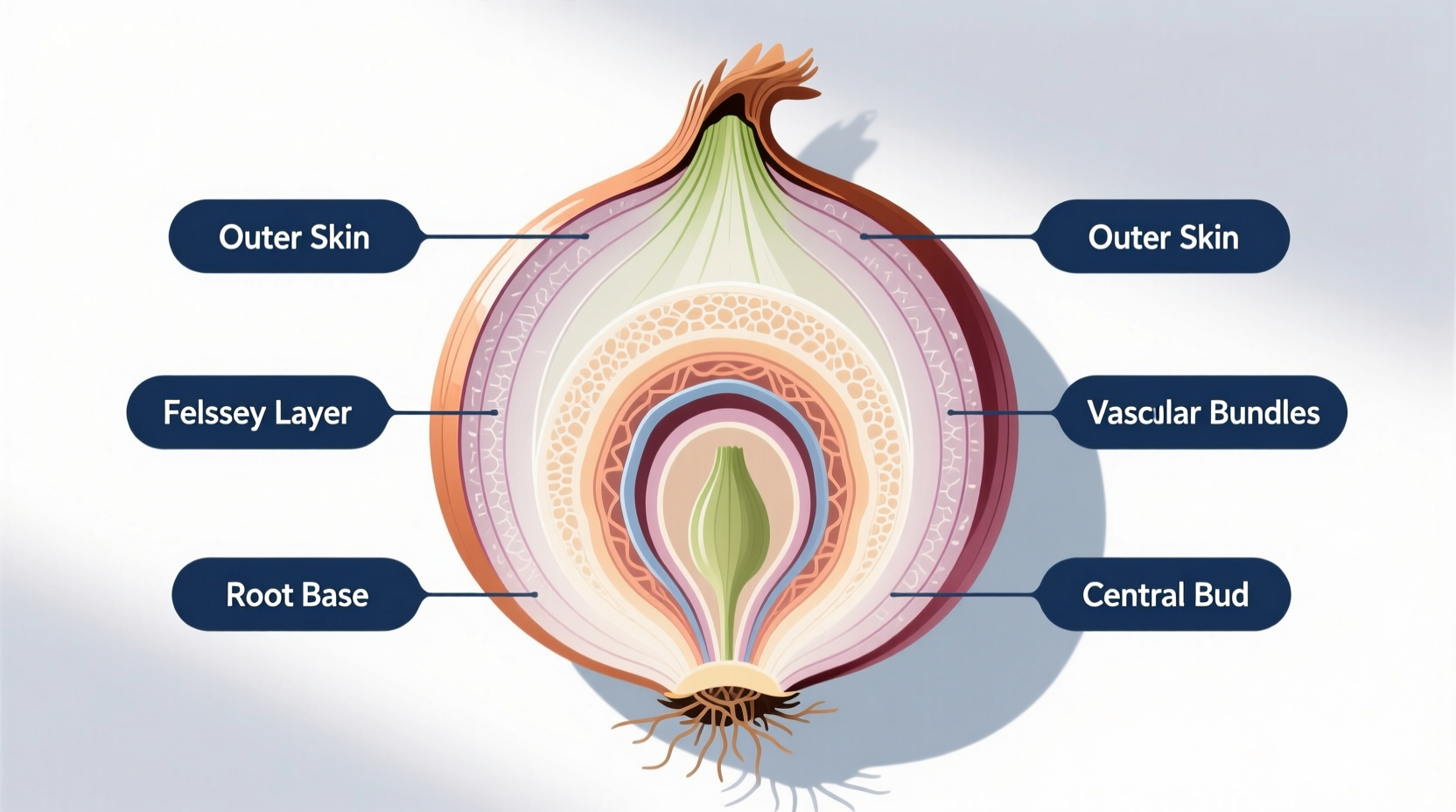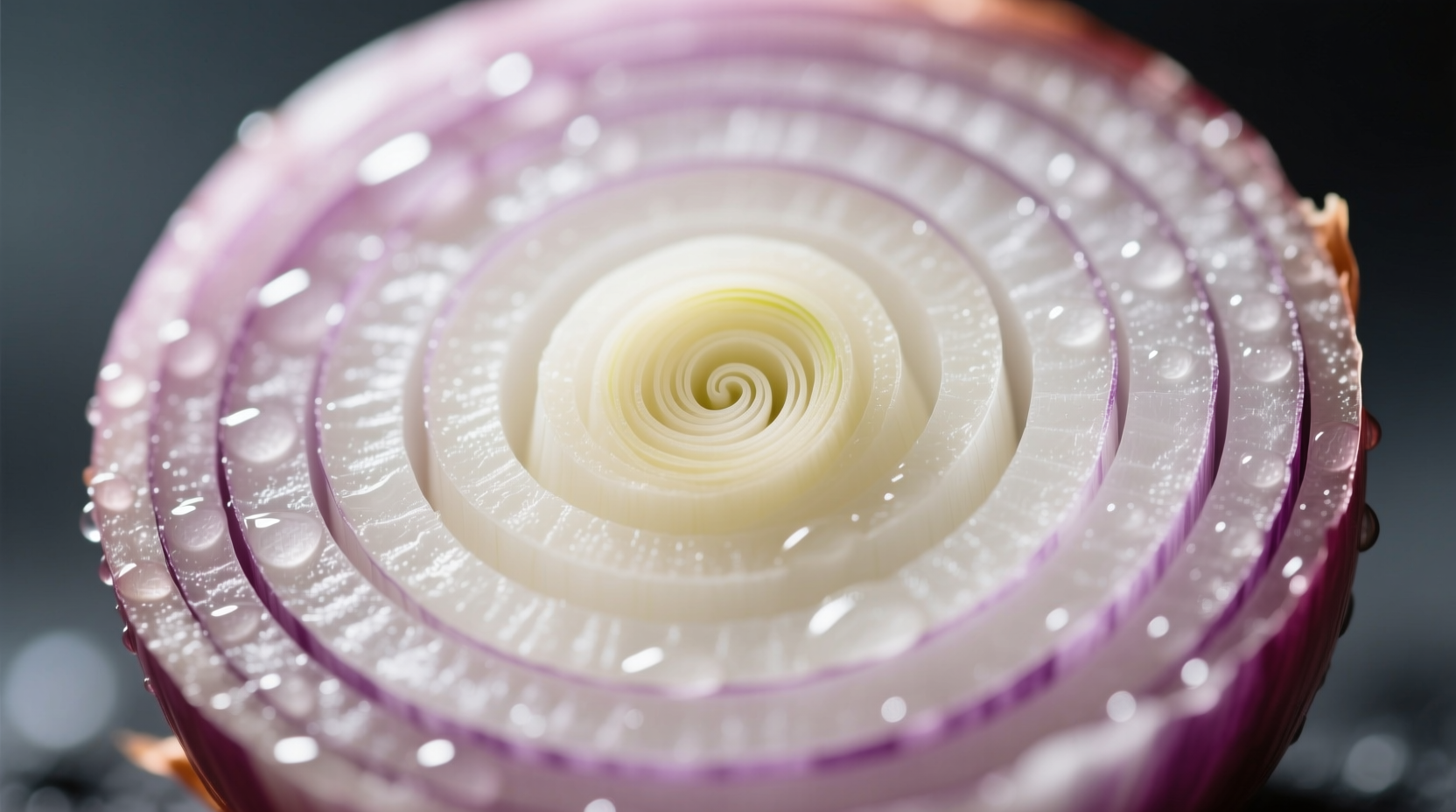
Why Onions Develop Layers: The Botanical Explanation
Onions form layers as part of their natural growth cycle. Each layer represents a modified leaf that stores energy for the plant. As the onion bulb develops underground, new layers form around the previous ones, creating the characteristic concentric structure. The outermost layers transform into the dry, papery skin that protects the inner layers from moisture loss and damage.
Botanists at Cornell University's School of Integrative Plant Science explain that onion layers develop through a process called bulbing, triggered by day length and temperature. When conditions are right, the plant redirects energy from leaf growth to bulb formation, causing the leaf bases to swell and store carbohydrates. This biological adaptation allows onions to survive unfavorable conditions and regrow when conditions improve.
How Layer Count Varies Across Onion Types
Not all onions have the same number of layers. The count depends on several factors including variety, growing season length, and environmental conditions. Here's how different onion types compare:
| Onion Type | Average Layer Count | Layer Characteristics | Best Culinary Uses |
|---|---|---|---|
| Yellow Storage Onions | 10-16 layers | Thick outer layers, strong flavor | Sautéing, caramelizing, roasting |
| Red Onions | 8-12 layers | Vibrant color, slightly milder | Salads, grilling, pickling |
| White Onions | 9-13 layers | Thin skin, crisp texture | Mexican cuisine, fresh salsas |
| Sweet Onions (Vidalia, Walla Walla) | 7-10 layers | Higher water content, fewer layers | Raw applications, quick cooking |
| Shallots | 3-5 layers | Multiple bulbs, delicate flavor | Vinaigrettes, sauces, fine cooking |
According to research from the USDA Agricultural Research Service, sweet onions like Vidalias have fewer layers due to their higher water content and specific growing conditions in low-sulfur soil. This structural difference contributes to their characteristic mild flavor and makes them less suitable for long cooking processes compared to yellow onions.
The Onion Growth Timeline: From Sprout to Multi-Layered Bulb
Understanding how onion layers develop over time helps explain their structure and culinary properties. The growth process follows this sequence:
- Germination (Weeks 1-2): The seed sprouts, developing initial roots and a single green shoot
- Leaf Development (Weeks 3-6): Multiple leaves form, with the base beginning to swell
- Bulbing Phase (Weeks 7-10): As day length increases, the plant redirects energy to bulb formation, creating the first fleshy layers
- Layer Accumulation (Weeks 11-16): New layers form around previous ones, with outer layers becoming protective skin
- Maturity (Weeks 17-20): Growth slows, outer layers dry completely, signaling harvest time
This growth pattern, documented by researchers at Oregon State University's Extension Service, explains why larger onions typically have more layers—they've had more time to develop additional concentric rings before harvest.
Practical Implications for Cooking: Working With Onion Layers
The number and structure of onion layers directly impact cooking techniques and flavor development. Professional chefs understand these relationships to maximize flavor extraction:
Flavor Distribution Across Layers
Contrary to popular belief, flavor isn't evenly distributed throughout an onion. The outer layers contain higher concentrations of sulfur compounds responsible for both pungency and the characteristic onion flavor. As noted in On Food and Cooking by Harold McGee, "the outer layers contain up to 30% more flavor compounds than the inner layers." This explains why many traditional recipes instruct to use the entire onion rather than just the inner portions.
Cutting Techniques That Respect Layer Structure
How you cut through onion layers affects both texture and flavor release:
- Vertical cuts (with the layers): Preserves layer integrity, ideal for caramelizing where you want distinct pieces
- Horizontal cuts (across the layers): Breaks more cell walls, releasing maximum flavor for soups and sauces
- Chopping through multiple layers: Creates uniform pieces that cook evenly for stir-fries and sautés
Common Misconceptions About Onion Layers
Several myths persist about onion layers that affect how home cooks use this fundamental ingredient:
Myth: More layers mean stronger flavor
Actually, layer count correlates more with onion size and variety than pungency. Sweet onions often have fewer layers but higher sugar content, while some pungent varieties may have moderate layer counts. The sulfur content of the soil where the onion grew has greater impact on flavor intensity than the number of layers.
Myth: The inner layers are sweeter
While inner layers may seem milder when eaten raw due to lower sulfur compound concentration, they don't contain more sugar. During cooking, all layers contribute similarly to flavor development as heat transforms the sulfur compounds.
Pro Tips for Maximizing Onion Flavor Based on Layer Structure
Understanding onion layers helps you extract maximum flavor in your cooking:
- For raw applications: Use inner layers for milder flavor in salads, outer layers for more pungent salsas
- For caramelizing: Keep layers intact by cutting vertically to create distinct, melt-in-your-mouth pieces
- For soups and sauces: Chop across layers to release maximum flavor compounds into the liquid
- When storing cut onions: Keep outer layers with inner portions to maintain flavor balance in subsequent uses
- For presentation: Use the distinctive layer structure to create decorative onion roses or layered garnishes
Professional chefs often save outer papery layers for making vegetable stock, as they contain concentrated flavor compounds that would otherwise go to waste. Simply store them in a freezer bag until you have enough for a batch of stock.
When Layer Count Matters Most in Cooking
While most recipes don't specify layer count, certain culinary applications benefit from understanding this aspect of onion structure:
- Pickling: Smaller onions with fewer layers (like pearl onions) absorb flavors more quickly and evenly
- Caramelizing: Larger onions with more layers create more distinct, melt-in-your-mouth pieces
- Raw applications: Sweet onions with fewer layers provide more consistent mild flavor throughout
- Stuffing: Onions with thicker layers hold their shape better when hollowed for stuffing
Food scientists at the University of California, Davis note that when precision matters—such as in molecular gastronomy applications where onions are transformed into spheres or foams—the number of layers affects how the onion responds to spherification techniques.











 浙公网安备
33010002000092号
浙公网安备
33010002000092号 浙B2-20120091-4
浙B2-20120091-4